Having visited Nahal Halavan on several occasions we enjoy the beautiful contrast between the red-orange sand and the blue sky.
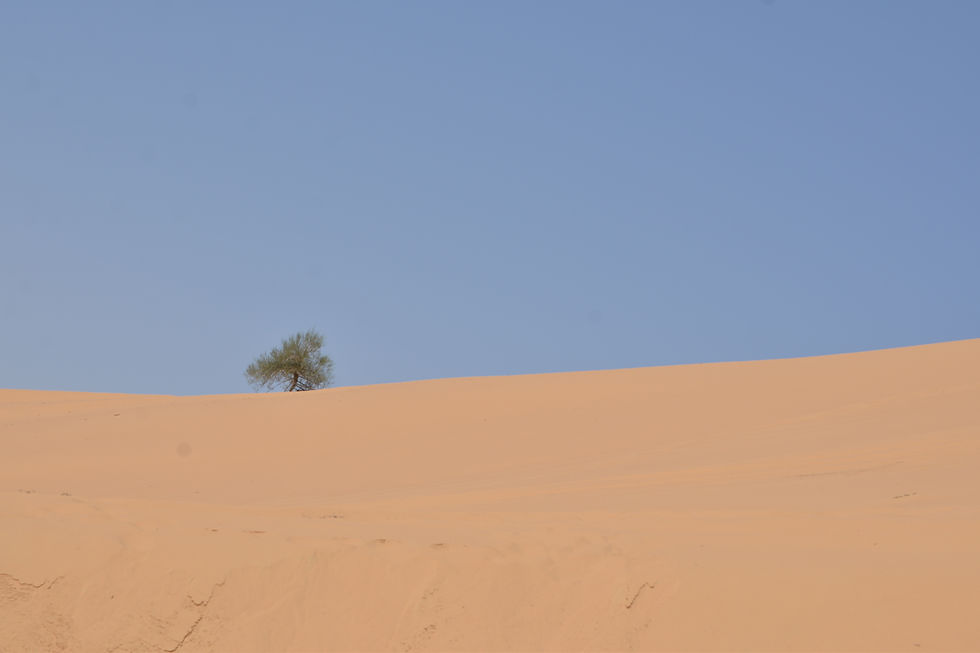
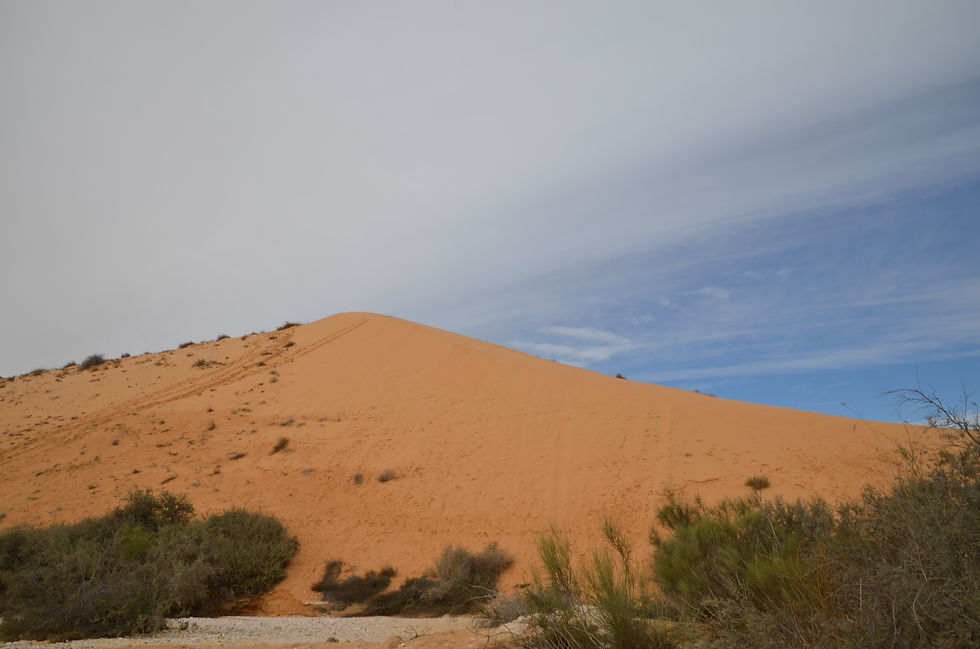
Along Nahal Halavan there is a very big dune about 40 meters high, from the top you see that you are in the middle of a sea of sand.
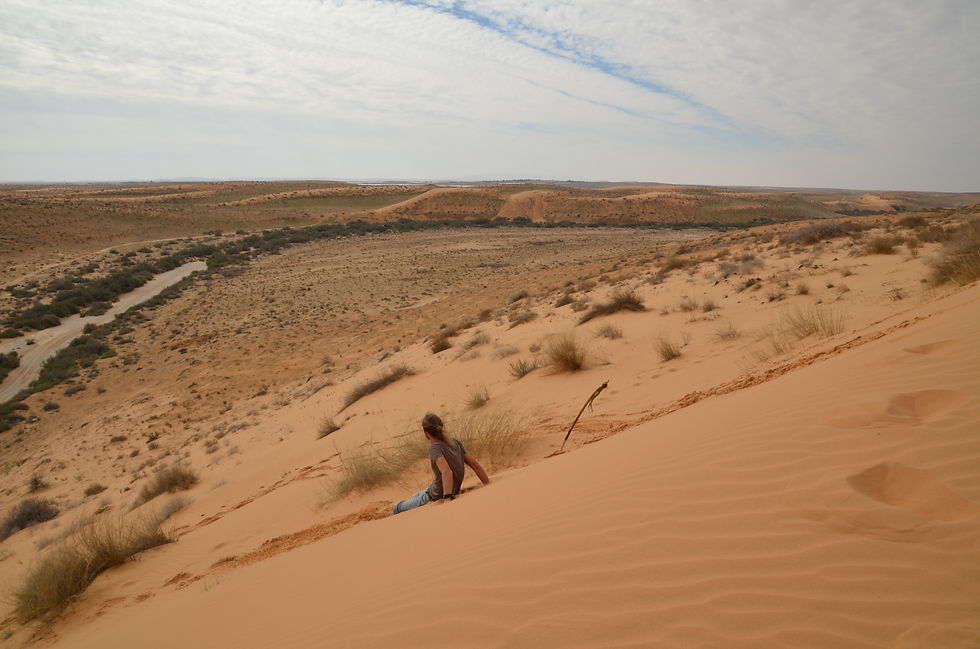
A sea of sand for as far as the eye can see.
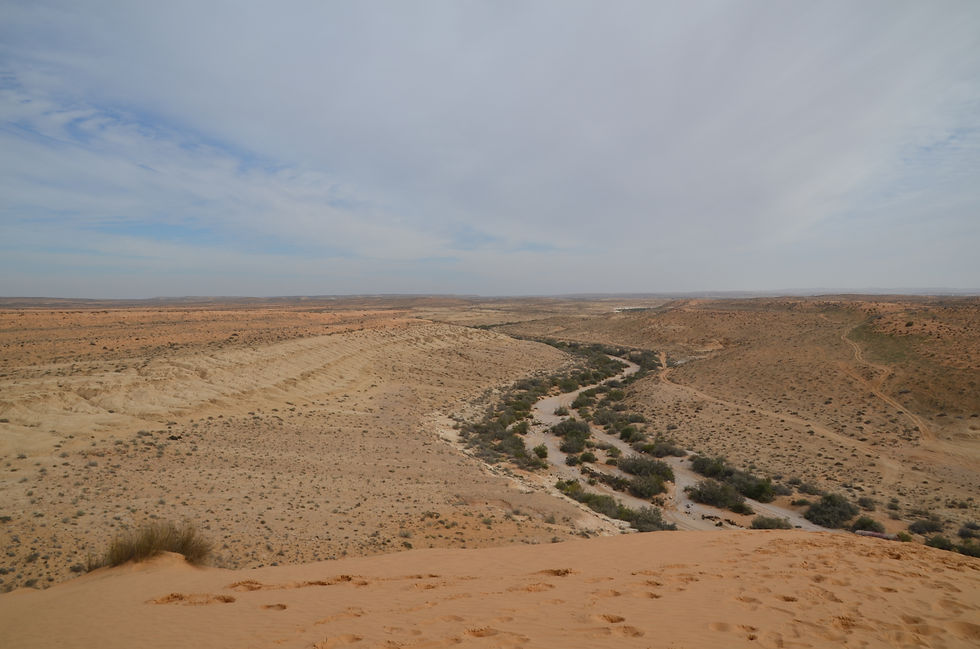

It is surprisingly difficult to climb, you take one step up but fall down two because the sand is soft and porous.



Not difficult to climb for a five years old!

Nahal Halavan also covered in sand.

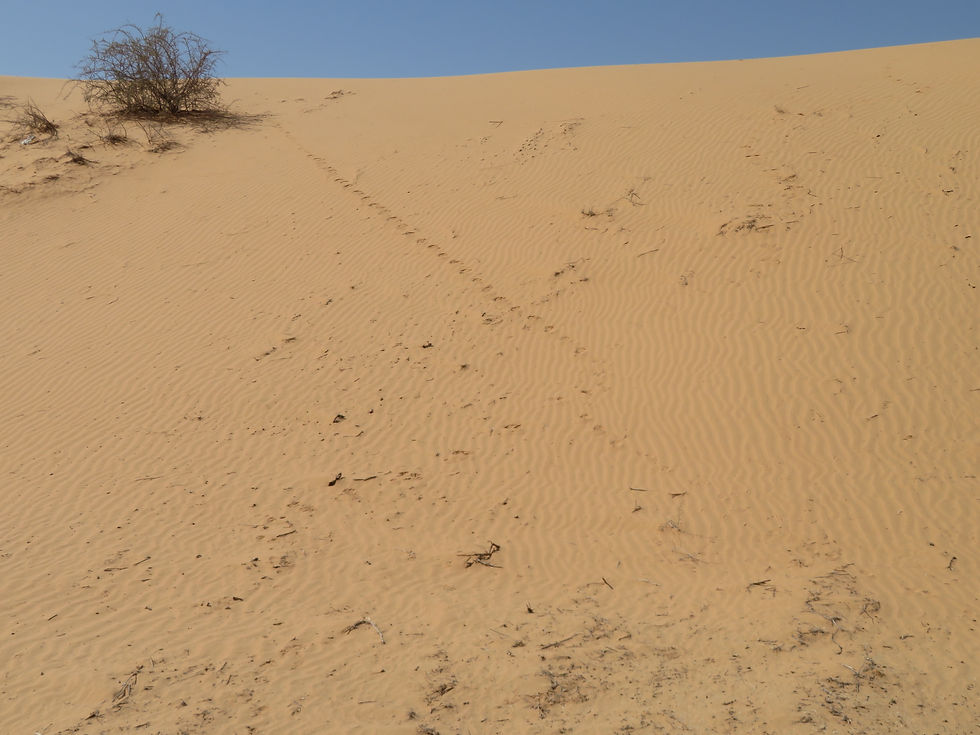
Sand dunes are like a living thing, it may even move under the right circumstances, like strong winds and scarce vegetation to hold down the sand. This fact annoys humans who are not interested in having sand move in next door or in the garden. It is said that the Big Dune in Ashkelon for the last half a century has moved in an eastern direction at a speed of 1.7 meters/year.

Vegetation can prevent shifting of sand; but vegetation depends on enough rain water; which may be scarce in times of drought. Naked sand dunes are called active dunes that can move; while sand dunes with more than 30% vegetation are fixed or stable dunes and unlikely to move. Here in the Negev, our dunes are partially fixed and linear.
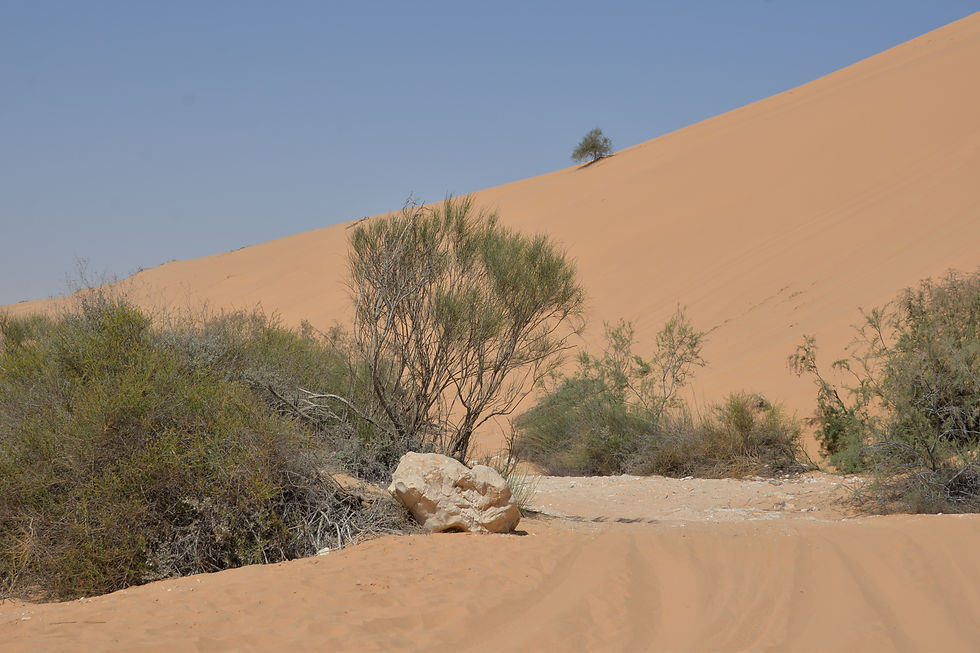
Another thing that stabilizes dunes is the biological soil crust or biocrust, unseen by the eye. In the dry Negev environment, the biocrust contains a thin membrane of filamentous cyanobacteria that will trap dust particles from air, like lichen, algae and fungi with photosynthetic capabilities, but also sand, clay and silt and by binding together these particles the surface of the dune becomes more resistant to the eroding effects of wind and rain. The biocrust also determines how much rain water is filtered into the dune and into the underground. The biocrust is considered an “ecosystem engineer” in the ways it affects many aspects of the dune’s health like erosion by wind and water.

Here were birds
Vegetation and the biocrust are disturbed by grazing animals, humans collecting shrubs for house holding, and of course vehicles driving everywhere.
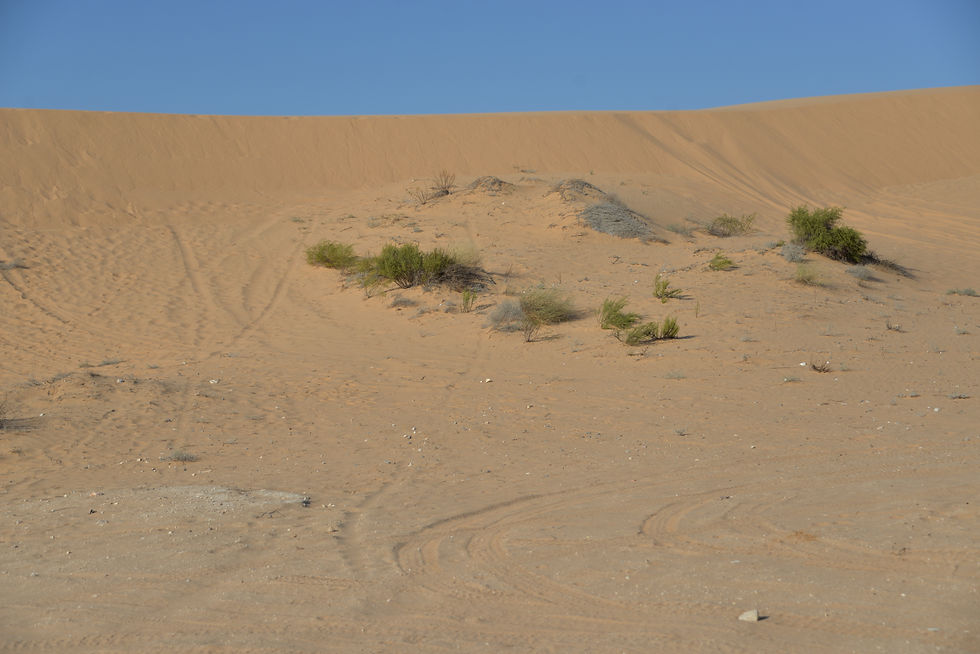
So how and when were these dunes created?
The Negev dunes are considered young in geological terms, 25,000 years old, with an accelerated growth in the period of global warming that caused melting of Europe’s glaciers (18,000-11,000 BC). The source of the sand in the Negev is in the northern Sinai, actually this is one continuous geographic unit stretching from the Nile delta until around Keren Mountain in Israel. But from space there is a clear demarcation due to human activities: on the Egyptian side more animals and human influence the vegetation than on the Israeli side (you have to find the photos on the internet by yourselves).
The red color of the sand dunes is caused by a mixture of sandy clay and quartz grains (hamra).

Sand storm
Last week we suffered the effects of the Carmel storm including a sand storm; the air was filled with sand so you could not see far, everything was painted in a yellowish color of the Negev sand that settled everywhere: in your nose, ears, eyes, between your teeth, cloths and of course it invaded our home under the door and windows. The sand of our sandstorms also originates in the Sinai.
This naturally occurring air pollution is a regular phenomenon here; the WHO recommends that air pollution should be kept at a PM10 less than 20μg/m3 but monitoring has revealed that “dust-free” days usually in the summer has an average PM10 level of 42; and during sandstorms like last week, it may reach 1000-5197μg/m3. Sand dunes constitute 10% of the world’s land as either coastal sand dunes formed by the ocean or sand dunes of deserts with a dry and hot weather, as we have it here in the Negev.

The sea of sand is fascinating and beautiful.
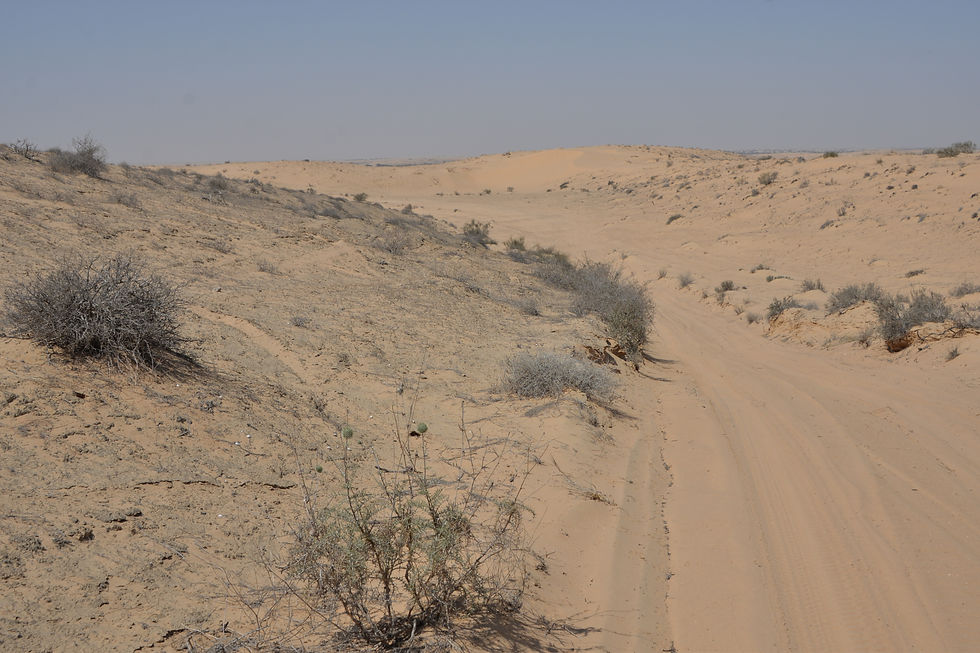

יפה מאוד גם ההסברים.